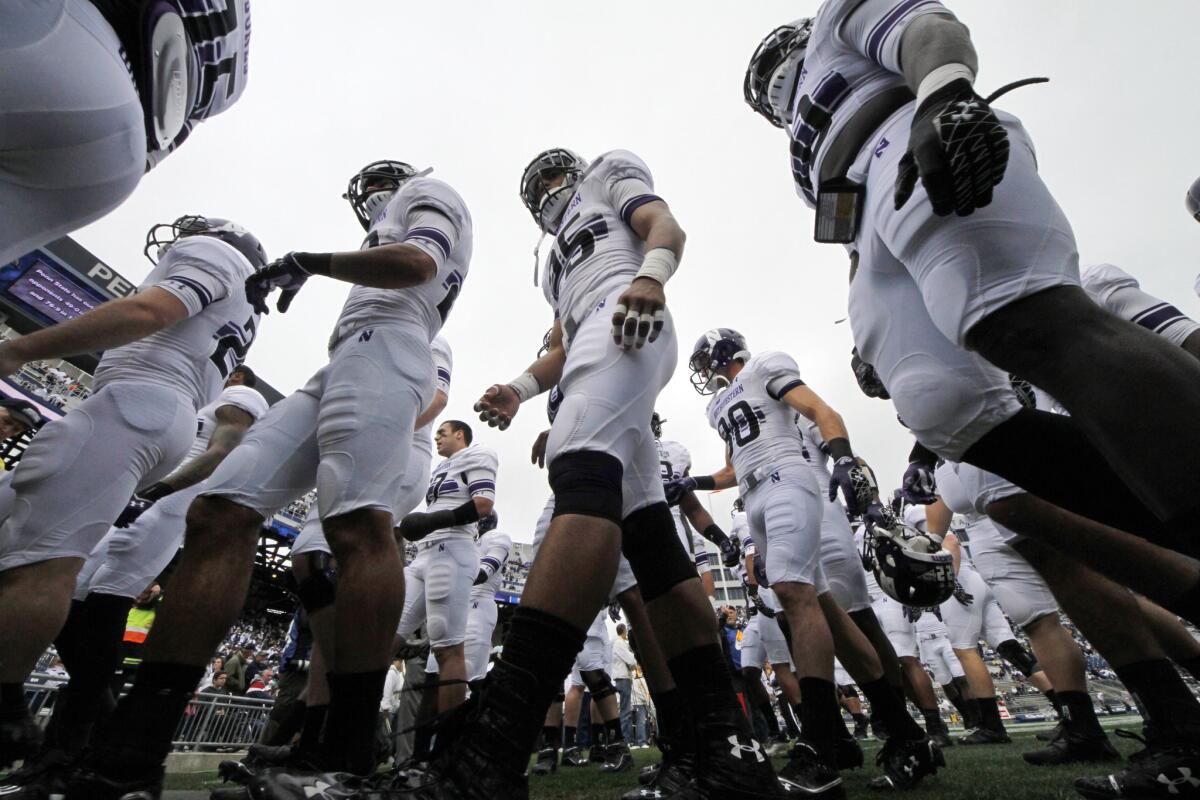Editorial: Why can’t college athletes unionize?

The Northwestern football team heads to the locker room after warming up before an NCAA college football game against Penn State in Oct. 2012.
- Share via
Five yards forward, five yards back, thank to the National Labor Relations Board.
First, a group of football players attending Northwestern University on athletic scholarships filed a petition with the NLRB seeking to organize a union. And in May 2014, the NLRB’s Chicago director ruled that the players — 85 members of the 122-player team — should be considered employees with collective bargaining rights. That was the right call, because as the ruling noted, the players are on campus first and foremost to play football for 40 to 50 hours per week, generating $235 million for the school during the 10 years ending in 2013.
But Northwestern appealed the regional director’s decision, and last week the full five-member board set it aside, declaring that it would “decline jurisdiction” because to intervene “would not serve to promote stability in labor relations.”
Why would recognizing a right to organize not promote labor stability? According to the NLRB, because of the structure of college sports. Under federal law, the NLRB has jurisdiction in private sector labor issues only. But only 17 of the more than 125 schools that field teams in the NCAA’s Division 1 Football Bowl Subdivision are private.
Northwestern also is the only private school in the NCAA’s Big Ten division, which includes the University of Wisconsin, where four years ago the state legislature barred public employees (which likely would include the players, if they tried to unionize) from collective bargaining over most issues. Players for public universities in other states could try to unionize under their states’ rules, but five are in right-to-work states, and Ohio and Michigan, after the initial NLRB ruling, passed laws declaring that scholarship athletes were not employees. So by wading in, the NLRB would be dealing with one employer — Northwestern — whose primary competitors’ players are either barred from organizing or have to follow a completely separate path to get there.
Faced with that rat’s nest of legal and jurisdictional issues, the NLRB threw the Northwestern players’ labor rights under the team bus. Though the board warned of instability, the opposite seems more likely to us — with players bargaining collectively at one school, players elsewhere could be emboldened to seek similar protections.
The issue isn’t going away. There is talk among activists about pursuing antitrust claims. The NCAA is appealing a federal court decision in a lawsuit by former UCLA basketball player Ed O’Bannon asserting that players should be allowed to profit from their own likenesses in television broadcasts and video games, which the NCAA bans. Of course, the NCAA could blunt these drives by behaving more fairly and reasonably to the people whose performances draw so many billions in revenues.
Follow the Opinion section on Twitter @latimesopinion and Facebook
More to Read
A cure for the common opinion
Get thought-provoking perspectives with our weekly newsletter.
You may occasionally receive promotional content from the Los Angeles Times.










